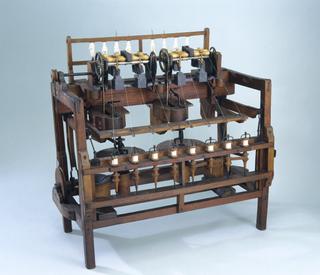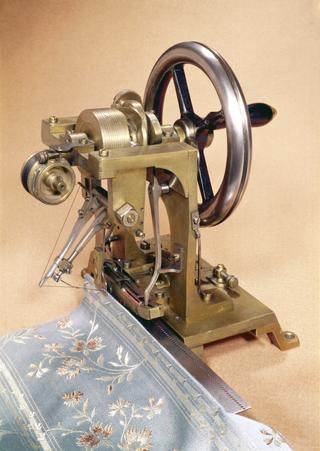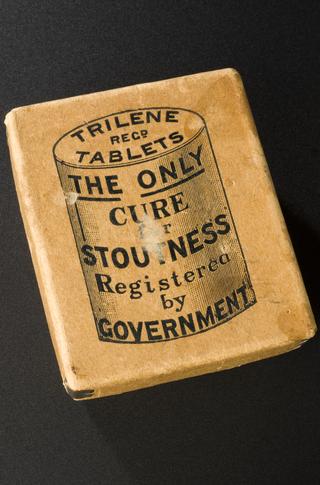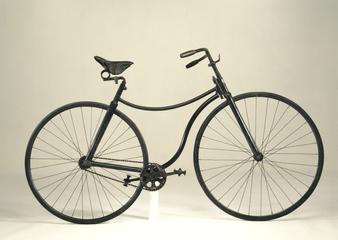
Power loom manufactured by J. Harrison and Son
- Made:
- 1842-1858
Power loom manufactured by J. Harrison and Son, Blackburn, England and fitted with the loose reed emergency stop mechanism of 1842. Exhibited at the Great Exhibition of 1851 and subsequently modified by the makers with design changes up to 1858.
Power loom manufactured by J. Harrison and Son and fitted with the loose reed emergency stop mechanism of 1842. Exhibited at the Great Exhibition of 1851 in a part of the displays entitled 'Machinery in Motion', and subsequently modified by the makers with design changes up to 1858. These types of looms were a major advance over the handlooms used before. In 1825, a weaver using a hand loom could weave only about 100 yards of cloth a week, while a power loom could weave 250 yards. Power looms were assembled in the weaving shed of a mill and driven by a steam engine by belts from overhead shafting.
The loom uses a loose reed mechanism invented in 1842 to stop the loom suddenly if the shuttle should be caught in the shed. This is a plain loom in which the headles are actuated by fourtappets to produce a four-thread twill. The picking stick is carried at the top of a vertical shaft, the lower end of which has a conical roller mounted on it. A cam operates on this shaft, having a profile which imparts a sudden movement to the picker and throws the shuttle across and through the shed. If the shuttle should not correctly rest in the shuttle box, after passing through the shed, there is an automatic stop mechanism known as a' loose reed motion'. This is operated by the lay when it is beating up the cloth because it swings the reed backwards, which through an arrangement of levers, pushes the driving belt onto the loose pulley. If the weft should break then the usual weft fork and grid arrangement stops the loom. There is a mechanical device, consisting of a rope (around the warp beam) and a lever, which when actuated by the lay, slackens the warp, so that the shed can be formed. The warp is similarly tightened when the shed is being closed. The cloth is taken up on the roller by a ratchet wheel and by a futher weighted lever mechanism is pressed against a roughened roller. A self acting temple keeps the cloth at a uniform width throughout the weave.
Details
- Category:
- Textiles Machinery
- Object Number:
- 1858-5
- Materials:
- cast iron, wood, wrought iron and steel
- Measurements:
-
overall: 1400 x 1900 x 1250 mm
- type:
- power loom
- credit:
- J Harrison and Sons




